Estimated reading time: 6 minutes
We often recommend planting a green manure crop before planting fruit trees. It’s one of the fastest and easiest ways to improve your soil.
Why is that important? Because when you’re aiming to grow apples (or any fruit) organically, finding ways to improve the soil without using artificial fertiliser is really important.
Related Articles
Learning from other fruit growers
Having a peer group of like-minded gardeners to spend time with is one of the best ways to learn about fruit growing.
Why does biodiversity matter?
Building biodiversity in your garden means you’ll grow healthier plants with fewer pest and disease problems.
Wicking beds and fruit trees
Wicking beds are a great solution for growing some fruit trees (and vegetables) where water is scarce or in tricky spots in the garden.
We also think that growing a diverse understory of plants under your fruit trees is a brilliant idea. It brings many benefits to the tree, the soil, and the microbes.
But there’s a lot of confusion between green manure and an understory, so let’s explore the difference.
Green manure vs. understory
A green manure is a diverse mix of fast-growing, usually annual plants. Once grown, the plants are then turned into the soil, where they add organic matter to your soil and help to improve soil fertility.
However, a green manure crop can also include perennial plants. In this case, it can be used to establish a perennial “understory” under your trees, if it’s properly managed.
The type of crop you choose depends on your purpose. Before planting new fruit trees on a new site, a green manure is usually the best choice.
For example, we consistently use green manures in our on-farm fruit tree nursery. Every year we plant green manure in the block where we’ll be growing new fruit trees the following spring.
We rotate through 4 different blocks, harvesting hundreds of fruit trees each year from the block that’s currently under production. A green manure is a great way to restore the organic matter and maintain the fertility of the soil.
This method is also fantastic before planting a new fruit tree in your garden. It enriches the soil and makes sure there are lots of organic matter, nutrients, and microbes to support your new fruit tree.
However, if you’re aiming to improve the soil around existing fruit trees, it can be impractical to turn a green manure into the soil without damaging the tree’s roots. In this case, it’s better to establish an understory.
If you’re aiming to establish a perennial cover crop but still want some rapid soil improvement, you can use the “chop and drop” method for dealing with the crop. The plants are just cut and left to lie, rather than turning the plants into the soil. This returns organic matter to the soil without killing the plants.
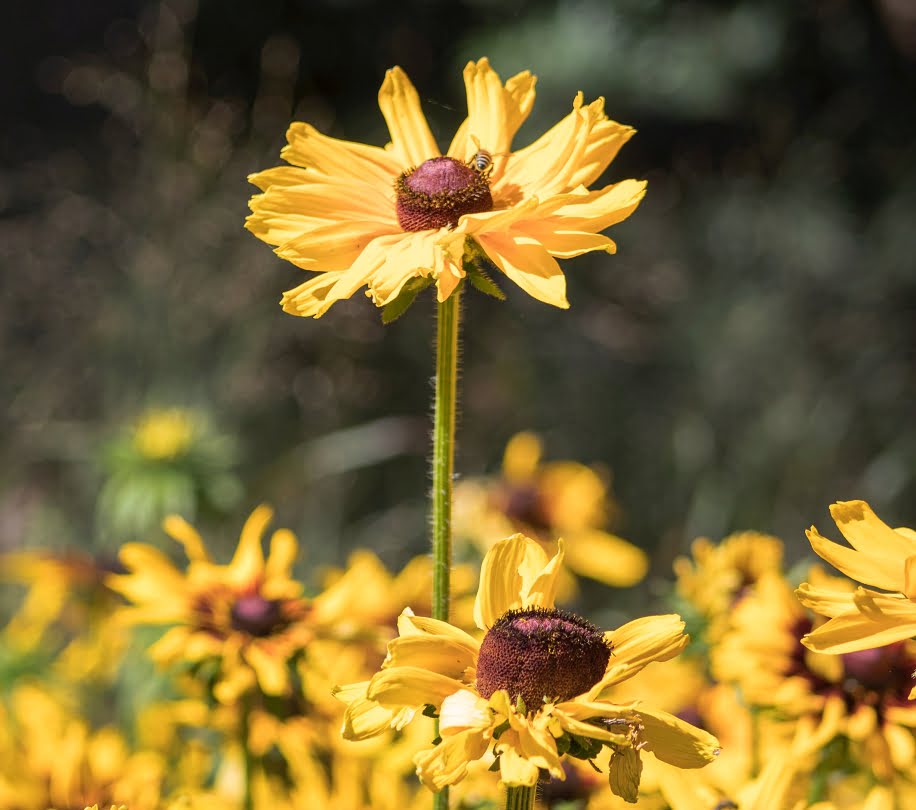
Choosing the right seeds for your purpose
The seed mix we use for cover crops includes grasses, legumes (nitrogen fixers), herbs, and flowers.
Grasses add bulk organic matter to the soil, legumes add nitrogen, and herbs and flowers add a diverse mix of nutrients.
Adding flowers, in particular, to the plants growing under your fruit trees is one of the best ways you can provide the right habitat for useful insects that help keep pests under control.
If you’re not sure what seeds to choose, you can check out our recommended plant lists (and even some suppliers of organic seed, if you’re in Australia).
What you’re really aiming for is diversity. The more variety you can get into your garden, the healthier your fruit trees (and all your other plants) will be. And if you’re growing your own food, you definitely want that food to be as healthy and nutrient-rich as possible.
What to expect after you plant your crop
If you planted your crop in autumn, what would you expect to see a few weeks later? Hopefully, lots of germination and tiny new plants poking their leaves up from the soil.

We particularly like having clover in our groundcovers because it’s a nitrogen fixer. That means it takes nitrogen from the air and puts it in the soil where the trees can use it. It’s always a good sign to see lots of clover seedlings coming up.
Clover is quite spreading and out-competes some of the less useful weeds. It also self-seeds, so will persist under your fruit trees for years.
Even though we plough green manure crops back into the soil before we plant the trees, we’ve found that varieties that have hard seeds will still come up. Over time the clover will gradually spread throughout the understory.
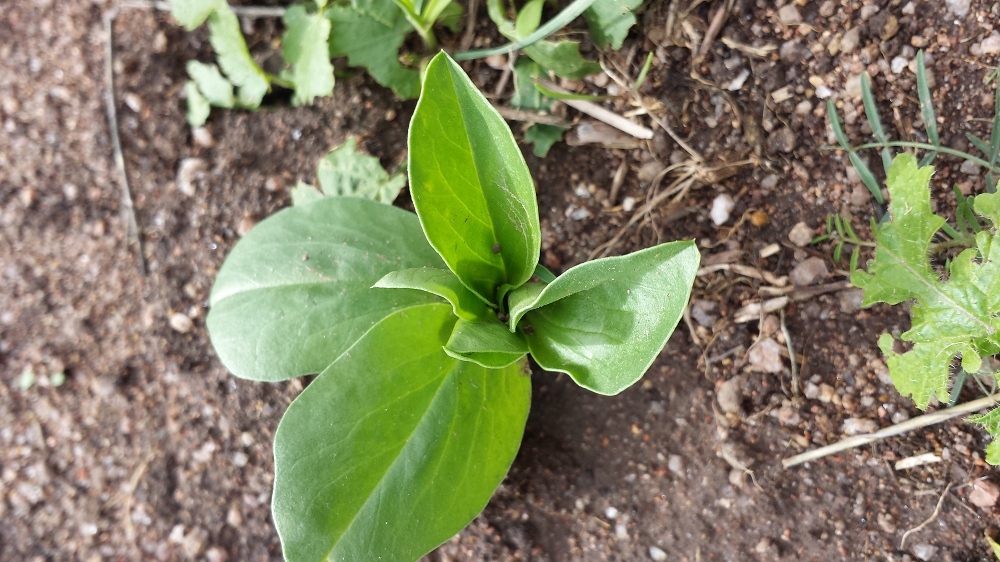
The point of a green manure crop is rapid growth. Hopefully, you’ll see lots of germination and growth in the weeks after you plant the crop. Depending on the conditions when you plant, you may need to water the crop to help it along.
Then, it’s time to get the yield from your hard work.
Managing your green manure or cover crop
If the purpose of your crop is rapid soil improvement (e.g. before planting new trees), you’ll need to turn it into the soil.
Here at the farm, we usually use a rotary hoe because we have one! In your home garden, it’s usually a matter of using a shovel to turn it into the soil.
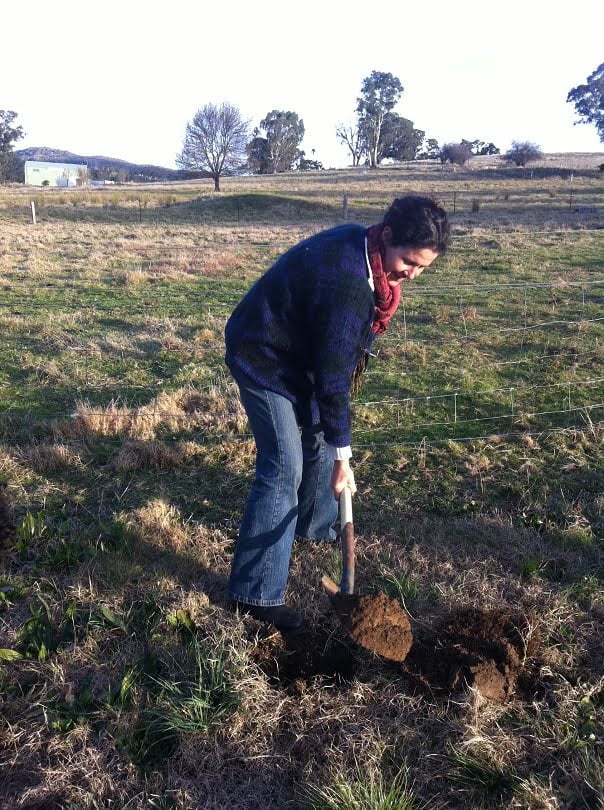
If you’re using the “crop and drop” method you can just mow it and leave it on the soil. This method can be used both for green manure crops and for a cover crop where you want to keep the plants alive.
It’s not quite as good in terms of rapid soil improvement, but the worms will eventually take that lovely organic matter underground for you.
One of the unfortunate consequences of using large machinery like a rotary hoe is that it seriously disturbs the soil. This provides the perfect environment for opportunistic weeds such as capeweed.
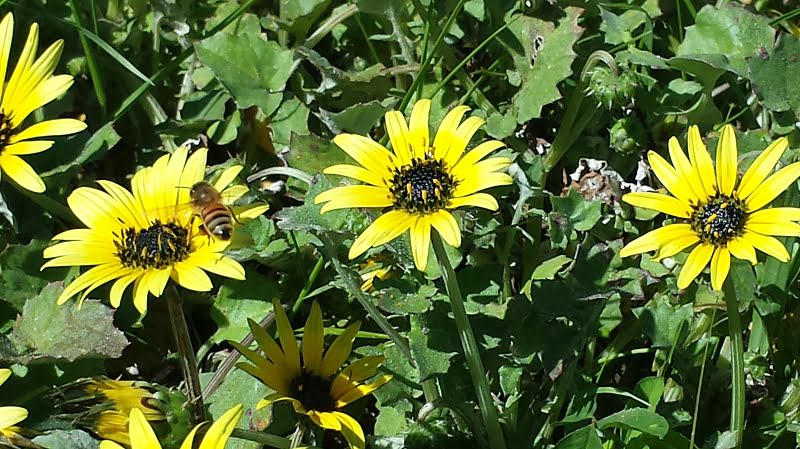
Even the much-despised capeweed has many fine qualities. However, it’s not the plant we prefer to see under our fruit trees. It tends to out-compete more useful plants, without having the benefits of being a nitrogen-fixer.
If you are going to turn in your green manure crop, try to leave at least a couple of weeks between doing so and planting your trees. The rotting green material can become quite hot as it breaks down, and you don’t want to burn the roots of your baby trees!
Related Articles
Learning from other fruit growers
Having a peer group of like-minded gardeners to spend time with is one of the best ways to learn about fruit growing.
Why does biodiversity matter?
Building biodiversity in your garden means you’ll grow healthier plants with fewer pest and disease problems.
Wicking beds and fruit trees
Wicking beds are a great solution for growing some fruit trees (and vegetables) where water is scarce or in tricky spots in the garden.

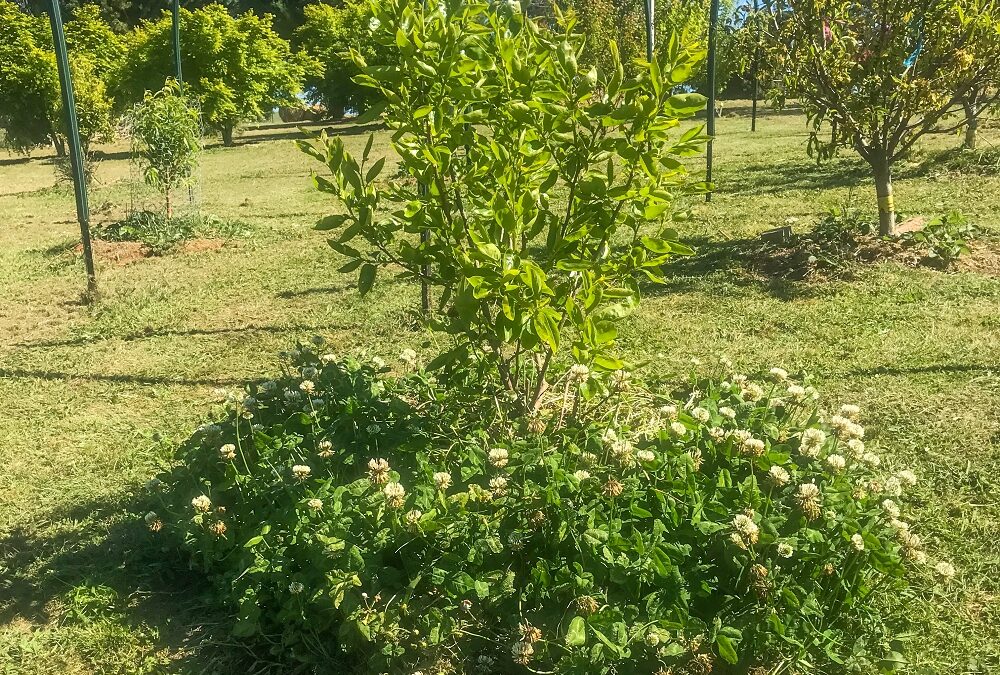

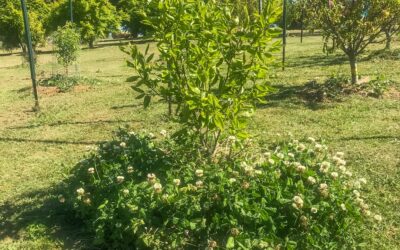



Hi, thanks so much for your awesome emails!
Just a quick question; is it too late now to sow a green manure crop? It will be under existing mature fruit trees. I’m in the Wimmera (Victoria) area..
Regards, Graeme.
Hi Graeme, thanks for the vote of confidence, really glad you’re finding the info useful.
No, it’s not too late to plant a green manure crop, especially under mature fruit trees, you just may not get a heap of growth before the cold of winter stops it growing, depending on what you plant. Choose either an autumn-specific green manure seed mix, or if you’re buying the seeds separately, look for ‘winter active’ plants to include.
Hi guys ,loving ya work:) I have had to severely prune Avery old apple after many years of feral care( or lack of) should a green manure crop be planted in a circumstance as this, or will the comp for nutrients be too bad.
Also I will be building a thermal greenhouse and wondered if you have come across anyone who has attempted fruit trees at central vic locations?
In advance many thanks paula
Hi Paula, glad you’re enjoying what we’re doing. It depends what’s already under the apple tree, but it never hurts to plant a green manure – they add more nutrient to the soil (and therefore make available for the tree) than they take away, so you can go ahead.
Check out Trace and Ronnen at the Daylesford Longhouse – they’re building a massive and wonderful shed/indoor garden that includes fruit trees, well worth a look: https://daylesfordlonghouse.tumblr.com/tagged/about.
Hi guys, I’ve bought a few of your short courses and am really enjoying the content. I was just wondering how to incorporate both spring/autumn green manure and also perennial understorey flowers under my fruit trees? I was really inspired by Dr Christine Jones’ masterclass and would love to increase the number of flowers in my garden while also reaping the benefits of green manure, but I’m not sure how to mow/slash with perennials around the tree? Maybe flowers and living mulch like strawberries/nasturtiums closer to the trunk and green manure more around the drip line and further out? Thanks in advance!
Hi Marta, thanks for letting us know you’re enjoying the courses, it’s great to hear they’re helpful. Because fruit trees are perennials, green manures are used differently to, for example, veggies. You might put one in and then turn it in before you plant the tree, or if you’ve got an existing tree already planted, you might do one or two green manure crops around it for some quick soil improvement, but then just focus on establishing a perennial understory. The perennials give as much benefit to the soil in the long term as repeated green manures. Christine’s main advice is to aim for “year-long green” under fruit trees, so it’s more important to think about which mix of plants will help you do that.